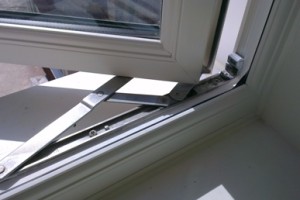"Ask Me Anything," 10 Responses To Your Questions About Window Rot Rep…
페이지 정보
작성자 Delbert 작성일25-07-23 15:49 조회2회 댓글0건본문
Understanding and Repairing Window Rot: A Comprehensive Guide
Windows are an important element of any building, providing light, ventilation, and visual appeal. However, they are likewise vulnerable to various types of damage, consisting of rot. Window rot, especially in wooden frames, is a common issue that can jeopardize the structural integrity of a window and cause costly repairs if left unaddressed. This article looks into the causes of window rot, the actions to recognize it, and the methods for repairing it, guaranteeing that house owners and property supervisors can maintain the functionality and look of their windows.
What is Window Rot?
Window rot is a form of decay that impacts wood window frames, sills, and parts. It happens when wood is exposed to moisture over a prolonged duration, resulting in the growth of fungi that break down the wood fibers. The procedure can be gradual, but if left unchecked, it can trigger substantial damage, consisting of warping, splitting, and the eventual collapse of the window structure.
Causes of Window Rot
Moisture Exposure: The primary reason for window rot is prolonged direct exposure to moisture. This can happen due to:
- Leaky Windows: If a window is not sealed properly, water can leak into the wood.
- Poor Ventilation: High humidity levels inside a structure can trigger moisture to accumulate on window frames.
- Inadequate Drainage: Poorly developed seamless gutters and downspouts can enable water to pool around windows.
- Leaking Roofs: Water from a dripping roofing system can drip onto window frames and trigger rot.
Lack of Maintenance: Regular maintenance, such as painting or staining, assists safeguard wood from moisture. Ignoring these jobs can speed up the rotting process.
Poor Quality Wood: Some kinds of wood are more resistant to rot than others. Using low-quality or without treatment wood can make the window more prone to decay.
Suboptimal Installation: Improper installation can leave gaps or fractures where wetness can go into, resulting in rot.
Determining Window Rot
Early detection of window rot is important to avoid more damage. Here are some signs to search for:
- Soft or Damp Wood: Gently press on the window frame or sill. If the wood feels soft or spongy, it is most likely rotten.
- Discoloration: Rotting wood often alters color, ending up being darker or lighter.
- Breaking and Splitting: Wood that is starting to rot may establish cracks or divides.
- Mold and Mildew: The presence of mold or mildew is a strong sign of wetness issues and possible rot.
- Moldy Odor: A moldy odor around the window can indicate concealed rot.
Actions to Repair Window Rot
Fixing window rot needs a systematic approach. Here's a detailed guide:
Assess the Damage
- Identify the degree of the rot. Minor damage can often be fixed, but severe damage may need replacement.
- Recognize the source of the moisture and address it to prevent future issues.
Eliminate the Rotten Wood
- Use a sculpt or a rotary tool to eliminate all the rotten wood. It's important to cut down to strong, healthy wood.
- Tidy the area to get rid of any remaining debris and guarantee it is dry.
Apply Wood Hardener
- Apply a wood hardener to the exposed, healthy wood. This product helps support the wood and prepare it for repair.
- Follow the maker's guidelines for application and drying time.
Fill the Area
- Utilize a wood filler or epoxy to fill deep spaces left by the eliminated wood. These products can be shaped and sanded to match the original surface area.
- Enable the filler to dry entirely before proceeding.
Sand and Smooth
- Once the filler is dry, sand the location to create a smooth surface area. Make sure to feather the edges to blend the repair with the surrounding wood.
- Clean away any dust with a wet fabric.
Prime and Paint
- Use a guide to the fixed location to ensure appropriate adhesion of the paint.
- Paint the window frame or sill to match the existing color and provide additional defense against moisture.
Seal the Window
- Make sure that the window is properly sealed to avoid water from entering in the future. Usage caulk or weatherstripping to seal any spaces.
Preventing Window Rot
Avoidance is key to preserving the longevity of your windows. Here are some suggestions to prevent window rot:
Regular Maintenance
- Paint or Stain: Reapply paint or stain every few years to protect the wood.
- Caulk and Weatherstripping: Check and replace caulk and weatherstripping as required to seal gaps.
Appropriate Drainage
- Seamless gutters and Downspouts: Ensure that rain gutters and downspouts are clean and functioning appropriately to direct water far from the windows.
- Landscaping: Slope the ground away from the structure to avoid water from pooling around the windows.
Ventilation
- Interior Ventilation: Use dehumidifiers or vents to reduce humidity levels inside the building.
- Exterior Ventilation: Ensure that the area around the windows is well-ventilated to prevent wetness accumulation.
Quality Materials
- Pick Rot-Resistant Wood: Opt for rot-resistant wood types like cedar, redwood, or pressure-treated lumber.
- Sealant: Apply a sealant to the wood to more secure it from wetness.
FAQs
Q: Can I repair window rot myself, or should I work with an expert?A: Minor window rot can often be fixed by a homeowner with fundamental tools and products. Nevertheless, if the damage is comprehensive or if you are not positive in your capabilities, it is best to employ a professional. Specialists have the experience and devices to make sure a proper repair and prevent further damage.
Q: How typically should I inspect my windows for rot?A: It is suggested to inspect your windows for indications of rot at least when a year, preferably during the spring or fall. Regular assessments can help capture problems early, making repairs more manageable and less costly.
Q: Can I avoid window rot in the very first place?A: While it is difficult to completely eliminate the risk of window rot, you can substantially reduce the possibility by following preventive procedures such as regular upkeep, appropriate drain, and using premium, rot-resistant materials.
Q: What should I do if the rot is extreme?A: If the rot is serious, the damaged wood elements might need to be replaced rather than repaired. In such cases, it is a good idea to consult a professional who can evaluate the scenario and suggest the finest strategy.
Q: Can I use wood filler for deep rot?A: Wood filler appropriates for small repairs and surface area damage. For deep rot, it is better to use a two-part epoxy, which is more powerful and more durable. Epoxy can likewise be utilized to fill larger spaces and fractures.

Window rot is a common problem that can cause significant damage to wooden window frames and sills. By understanding the causes, determining the signs, and following a systematic approach to repair, property owners and property supervisors can maintain the functionality and appearance of their windows. Routine maintenance and preventive procedures are vital to preventing rot and making sure the durability of your windows. Whether you choose to deal with the repairs yourself or employ an expert, resolving window rot promptly is necessary to protect your investment and the structural stability of your building.
Additional Resources
- Regional Hardware Stores: Visit local hardware stores for a range of wood fillers, sealants, and paints.
- Professional window repair (click here to visit git.thunraz.se for free) Services: Consider working with a professional if the damage is extensive or if you are not sure about the repair process.
- Online Tutorials: Look for detailed guides and video tutorials on fixing window rot for extra guidance.
By staying notified and proactive, you can keep your windows in top condition and enjoy the lots of benefits they supply.

댓글목록
등록된 댓글이 없습니다.














